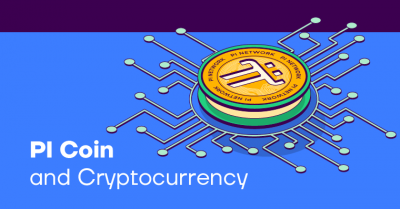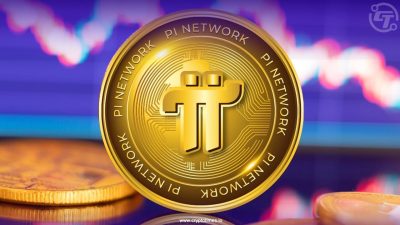What is Pi Network?
Pi is a new digital currency developed by Stanford PhDs, with over 55 million members worldwide. Following the mainnet, experts predict Pi Network could trade between $93.41 and $220.46 in 2025, with an average price around $141.64. To start simple mining and claim your Pi coins, follow this link https://minepi.com/

Pi Network is a digital currency project that aims to create a decentralized, open-source, and community-driven cryptocurrency. It was launched in 2019 by a group of Stanford University PhDs. Pi is a network of tens of millions of humans mining Pi cryptocurrency to use and build the Web3 app ecosystem.
What is Pi Coin?
Pi is a social cryptocurrency and a developer platform designed to give users greater control over their digital assets and interactions.
Pi Network is a blockchain initiative designed for mobile use, allowing individuals to mine cryptocurrency directly from their smartphones. The project aims to simplify crypto mining by making it accessible through mobile devices, enabling anyone to participate without needing the extensive hardware traditionally required for mining.
Developed by a group of Stanford University alumni, Pi Network focuses on building a decentralized peer-to-peer ecosystem. The project’s goal is to create an inclusive network where users can mine Pi coins effortlessly by tapping an app button once a day. This approach eliminates the need for substantial computing power or staking, distinguishing it from many other cryptocurrencies.
Here are some key features of Pi Network:
Key Characteristics of Pi Network:
Decentralized: Pi Network operates on a decentralized network, allowing users to mine and validate transactions without a central authority.
Mobile-first: Pi Network is designed for mobile devices, making it accessible to a broader audience.
Low-energy mining: Unlike traditional cryptocurrencies, Pi Network uses a low-energy mining process that doesn’t require significant computational power.
Community-driven: Pi Network encourages community involvement, allowing users to participate in decision-making and contribute to the network’s development.
How Pi Network works:
Users download the Pi Network app and create an account.
They can mine Pi coins by simply opening the app and clicking on the “Mine” button.
The app uses a mobile-friendly, low-energy algorithm to mine coins.
Users can also participate in the network by validating transactions and contributing to the community.
Goals and Vision:
Democratize access to cryptocurrency: Pi Network aims to make cryptocurrency accessible to everyone, regardless of technical expertise or resources.
Create a decentralized economy: Pi Network envisions a decentralized economy where users can transact and interact without intermediaries.
Current Status:
Pi Network is still in its testing phase (Phase 2) and has not yet launched its mainnet. The project has gained significant attention, with over 30 million registered users worldwide.
- Pi Network’s value and potential are still uncertain, as with any cryptocurrency.
- The project is still in development, and changes to its architecture or goals may occur.
- Users should exercise caution and do their own research before investing time or resources.
How to buy, sell, trade and transfer Pi coins
As of now, Pi Network coins (Pi) are not listed on major cryptocurrency exchanges, and buying/selling is limited within the Pi Network ecosystem. Here’s a step-by-step guide on how to buy, sell, trade and transfer Pi coins:

Currently, Pi coins can’t be bought with fiat currency (e.g., USD). However, you can:
Buying Pi Coins:
- Mine Pi coins using the Pi Network app (available for Android and iOS).
- Receive Pi coins as rewards for contributing to the network (e.g., validating transactions).
- Participate in Pi Network’s Ambassador Program to earn Pi coins.
Selling Pi Coins:
Pi Network has not yet enabled direct selling of Pi coins. However, you can:
- Transfer Pi coins to other Pi Network users.
- Use Pi coins to purchase goods/services within the Pi Network ecosystem (when available).
- Wait for Pi Network’s mainnet launch, when Pi coins might become tradable on cryptocurrency exchanges.
Transferring Pi Coins:
To transfer Pi coins to another user:
- Open the Pi Network app.
- Go to the “Wallet” section.
- Select “Send” or “Transfer.”
- Enter the recipient’s Pi Network username or public key.
- Specify the amount of Pi coins to transfer.
- Confirm the transaction.
Future Plans:
Pi Network aims to enable seamless buying, selling, and trading of Pi coins on various cryptocurrency exchanges and within its ecosystem. Once the Pi network mainnet launches in 2025, users may be able to:
- Buy Pi coins with fiat currency.
- Sell Pi coins for fiat currency or other cryptocurrencies.
- Trade Pi coins on cryptocurrency exchanges.
How to increase Pi network mining rates
To increase your Pi Network mining rate, follow these strategies:
Optimize Your Mining Setup:
- Ensure your phone’s operating system and Pi Network app are up-to-date.
- Close unnecessary apps to free up resources.
- Use a reliable internet connection (Wi-Fi or mobile data).
Increase Your Mining Rate:
- Invite friends: Earn 0.1π/hour for each active referral (max 5).
- Complete daily tasks: Participate in surveys, quizzes, or other activities.
- Contribute to the network: Validate transactions, participate in voting.
- Join Pi Network’s Ambassador Program.
- Participate in Pi Network’s community forums.
Boost Your Mining Rate Temporarily:
- Attend Pi Network events or webinars.
- Participate in Pi Network’s contests or hackathons.
- Complete special tasks or achievements.
Long-Term Strategies:
- Build a strong network: Invite and engage with friends.
- Contribute to Pi Network’s development (e.g., coding, content creation).
- Stay active and consistent.
Important Notes:
Pi Network’s mainnet launch may bring changes to mining rates..
Pi Network’s mining rate algorithm adjusts dynamically.
Mining rates may fluctuate based on network conditions.
What are the top 10 crypto currencies mining?
Here are the top 10 cryptocurrencies to mine, considering factors like mining rewards, algorithms, and hardware requirements:
- Bitcoin (BTC): The largest crypto by market capitalization, Bitcoin is a popular choice for miners seeking long-term profitability. However, high competition requires top-of-the-line mining rigs and mining pools.
- Monero (XMR): Offering enhanced anonymity, Monero is ASIC-resistant, making it accessible for CPU and GPU miners, with a current mining reward of 0.6 XMR/block.
- Litecoin (LTC): This popular altcoin offers faster transaction confirmation times than Bitcoin, with a Scrypt algorithm suitable for GPU mining and a current mining reward of 12.5 LTC/block.
- Ravencoin (RVN): Focusing on asset transfer and decentralized applications, Ravencoin utilizes the KawPow protocol, ASIC-resistant, with a current mining reward of 2500 RVN/block.
- Zcash (ZEC): Known for its privacy features, Zcash allows users to conduct private transactions, with an Equihash algorithm suitable for GPU mining and a current mining reward of 2.5 ZEC/block.
- Dogecoin (DOGE): Starting as a meme cryptocurrency, Dogecoin has gained popularity, with a Scrypt algorithm suitable for CPU and GPU mining and a current mining reward of 10,000 DOGE/block.
- Dash (DASH): Focusing on instant and private transactions, Dash uses the X11 algorithm, suitable for ASIC and GPU mining, with a current mining reward of 1.08 DASH/block.
- Grin (GRIN): Prioritizing privacy and scalability, Grin uses the MimbleWimble algorithm, suitable for GPU mining, with a current mining reward of 60 GRIN/block.
- Ethereum (ETH): A popular choice for miners, Ethereum offers significant rewards, but requires substantial hardware investments ².
- Ethereum Classic (ETC): Similar to Ethereum, Ethereum Classic offers notable mining rewards, with a compatible algorithm and moderate hardware requirements.
Recent Comments